
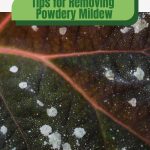
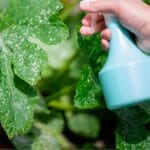
Any gardener growing vegetables in a greenhouse will likely encounter powdery mildew at some point or another. This frustrating fungal disease is incredibly common, and it can affect your plants even if you’re doing everything by the book.
Worst of all, it affects the kind of vegetables that grow best in a greenhouse environment, such as squash, cucumbers, and tomatoes. Luckily, it’s easy to prevent this disease by following a few guidelines.
If you’ve already identified powdery mildew in your greenhouse garden, you can get rid of it with a little effort. Ultimately, the most efficient way to deal with powdery mildew is using a combination of organic fungicides and correct growing practices.
Let’s start by understanding what causes this disease in the first place and how to spot the early symptoms. Then we’ll reveal the best powdery mildew prevention and treatment methods so you can get rid of powdery mildew in your greenhouse for good!
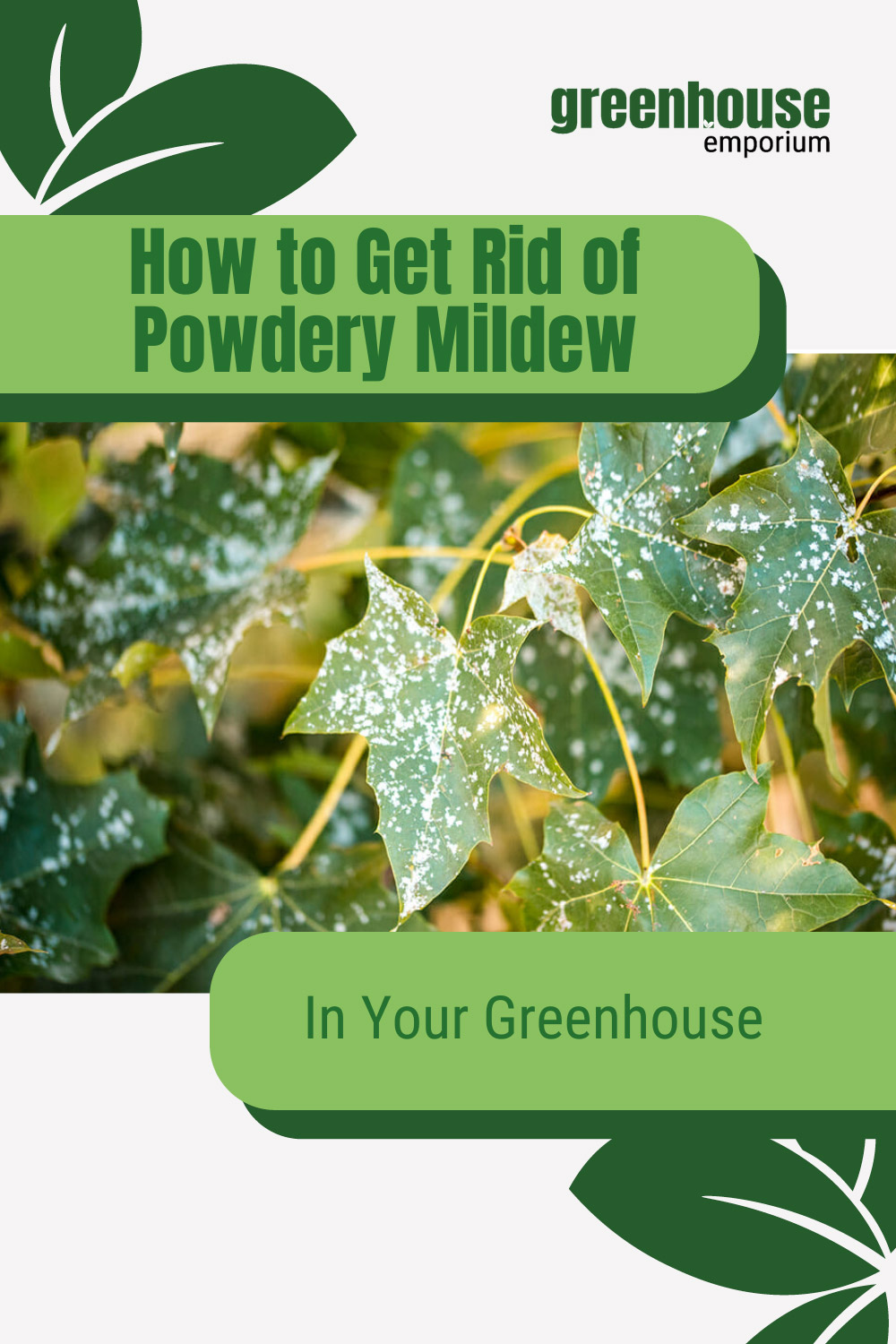
What does powdery mildew look like?
Powdery mildew is a fungal disease caused by several host-specific pathogens. It thrives in warm, humid environments with poor airflow, and needs warm, dry days and cool, humid nights to spread. In a greenhouse, you’re most likely to notice it in spring and fall, or when temperatures range between 68°F and 86°F.
Powdery mildew symptoms are easy to identify. Look for round, white, fuzzy, or powdery patches on the leaves and stems. In severe cases, you may also notice that the leaves are turning yellow or brown, or starting to shrivel.
It’s highly unlikely that powdery mildew will kill your plants. However, it can weaken them, cause stunted growth, make them more vulnerable to other pests and diseases, and reduce the yield of your vegetables.
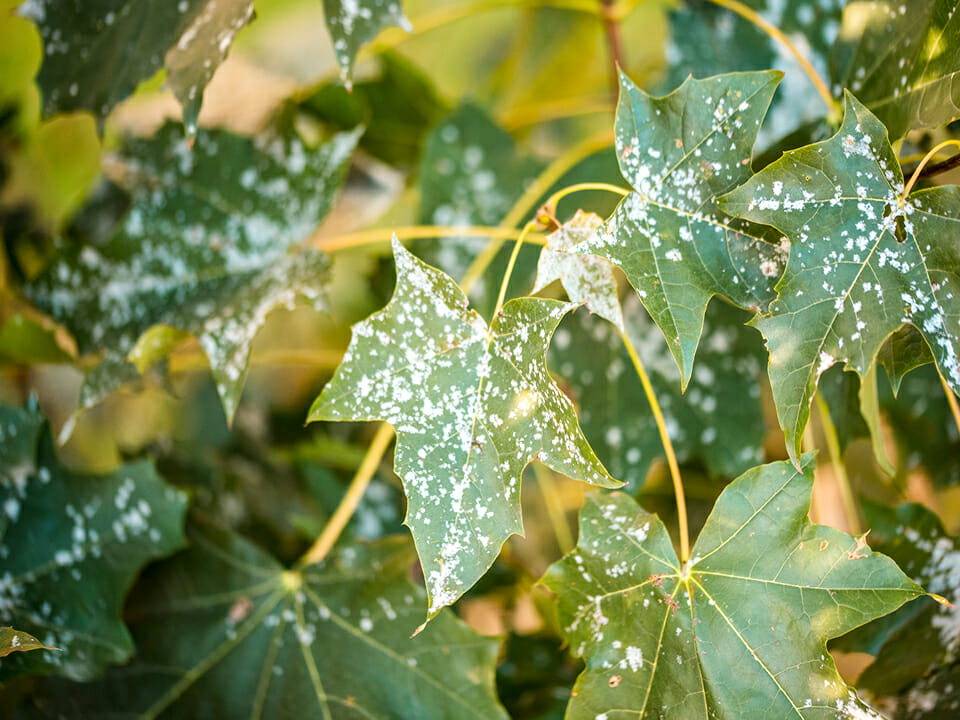
Which plants are most susceptible to powdery mildew?
Powdery mildew can affect a wide host of plants. This includes vegetables such as basil, tomatoes, lettuce, carrots, peas, peppers, and even flowers, like zinnias and roses. But the most susceptible plants are vegetables in the Cucurbit family, namely squash, pumpkin, cucumbers, and melons.
3 Organic pest control tricks to get rid of powdery mildew in a greenhouse
Getting rid of powdery mildew can be a lengthy and frustrating process if the disease has been allowed to establish itself. But you don’t need harsh chemicals or systemic fungicides for the job. You can get great results using organic homemade remedies, especially if you apply them as soon as you notice symptoms of powdery mildew.
Here are our top natural methods of powdery mildew control:
Potassium bicarbonate
Potassium bicarbonate is a safe-to-use fungicide that kills powdery mildew on contact. Simply mix 4 teaspoons in 1 gallon of water and use this solution to spray your plants once a week.
This solution can be used preventatively (before the onset of the disease) but can also be successful at halting its spread.
Milk
Believe it or not, milk is a surprisingly effective way to treat powdery mildew. It contains a protein called lactoferrin, which has antimicrobial properties and inhibits fungal growth.
To use it as a natural fungicide in your greenhouse, mix a solution of 2 parts milk to 3 parts water (or a 40% – 60% milk to water ratio). Spray it on the leaves and stems once every 7 to 10 days. For best results, apply the treatment during the day, when your plants are in full sun.
Studies have found that full-fat milk is most efficient at fighting powdery mildew. Both raw and pasteurized milk are fine. However, plant-based milk does not contain lactoferrin, which means you can’t use it as a substitute. For a vegan-friendly control, use one of the other methods such as potassium bicarbonate or neem oil.
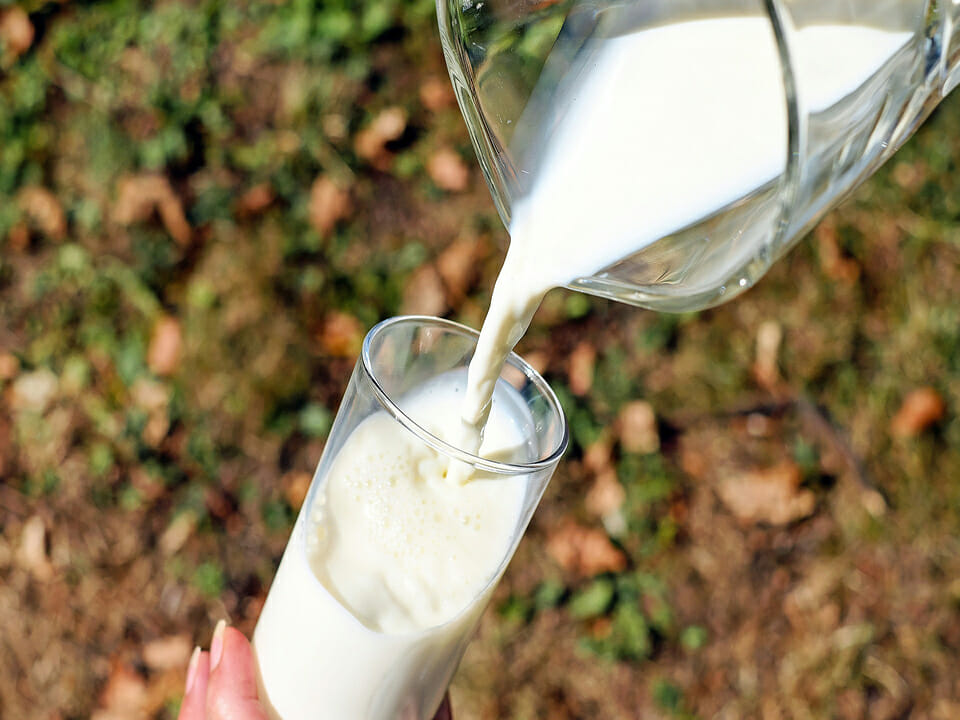
Neem oil
Neem oil is an organic fungicide that you can use to kill powdery mildew spores. To be truly effective, you will need to use a neem oil concentrate that’s at least 70%. Mix 4 teaspoons of neem oil and 1 tsp castile soap in 1 gallon of warm water. Use this solution on your plants once every 7 days.
Does baking soda kill powdery mildew?
Baking soda or sodium bicarbonate has been touted as a powdery mildew remedy for decades. However, recent studies indicate that it’s not as efficient as we may think. On one hand, you can use it to prevent a powdery mildew outbreak, by creating inhospitable conditions for this fungus. On the other hand, using it too often can result in a sodium buildup which is toxic to plants.
You can use baking soda to prevent and reduce the spread of powdery mildew, but only when you combine it with a horticultural or vegetable oil. Mix 2 tablespoons of oil and 1 tbsp of baking soda in 1 gallon of water, then apply this solution to your infected plants sparingly.

How to get rid of powdery mildew and prevent it from infesting your greenhouse
A greenhouse is warm and humid by its very nature. Compared to an open garden, this can make preventing and controlling the spread of powdery mildew more challenging. However, the best way to control powdery mildew is to prevent it in the first place.
Follow these tips to keep your greenhouse plants healthy and disease-free:
Grow resistant varieties
The first and most important step in preventing powdery mildew in your greenhouse is choosing and growing disease-resistant varieties. Always check the information on seed packets and pick cultivars that are resistant to powdery mildew.
You can find a list of popular resistant varieties here.
Provide ventilation
Proper ventilation helps control the humidity in your greenhouse, which greatly reduces the risk of powdery mildew. Even something as simple as opening the vents can help. In large greenhouses, you can also install fans to improve ventilation.
Trim plants to increase airflow
Use a pair of gardening scissors disinfected with rubbing alcohol to regularly trim old, damaged, and wilted leaves. This helps increase airflow between your plants, especially if they’re growing close together. Plus, it encourages the plants to divert their energy into flowering and fruit production, which promotes a higher yield.

Try growing plants vertically
Growing plants vertically is a great way to save space in your greenhouse and improve airflow. All you need is a trellis, garden wire, or string. Most vegetables that are vulnerable to powdery mildew, such as cucumbers and zucchini, also love climbing, and they will benefit from growing on supports.
Avoid overhead watering
If the leaves stay wet all the time, they’ll be more susceptible to fungal diseases. Always water your plants at the base, or use a drip irrigation system. Also, try watering your plants in the morning, to allow the excess moisture to evaporate throughout the day.
Inspect your plants regularly
Powdery mildew spreads rapidly and can be difficult to control. But dedicating just 5 minutes of your time each day to checking your plants will help you stay one step ahead of this disease. And the sooner you act, the higher the chance that your treatments will be effective.
Keep your plants healthy
All plants have natural mechanisms to protect themselves against fungal diseases. If your vegetables are healthy, they’re less likely to suffer from powdery mildew and more likely to survive an outbreak. Meanwhile, a stressed plant will be too weak to defend itself.
To keep your plants at optimal health, avoid overcrowding, try planting in full sun wherever possible, water regularly, and remember to add compost or fertilize regularly!
Can you compost plants that have powdery mildew?
Plants with powdery mildew can be safe to compost, but only if your compost gets hot enough. This fungal disease will die in temperatures of 95°F and higher. If you compost correctly, the temperature in your heap or bin should destroy the pathogen. Also, powdery mildew is not soil-borne, which means that you can use the humus without the risk of future outbreaks.
If you have a lot of infected plant material, or your compost does not get hot enough to destroy the spores, you might consider tossing the infected material in your yard waste bin to be on the safe side.
































